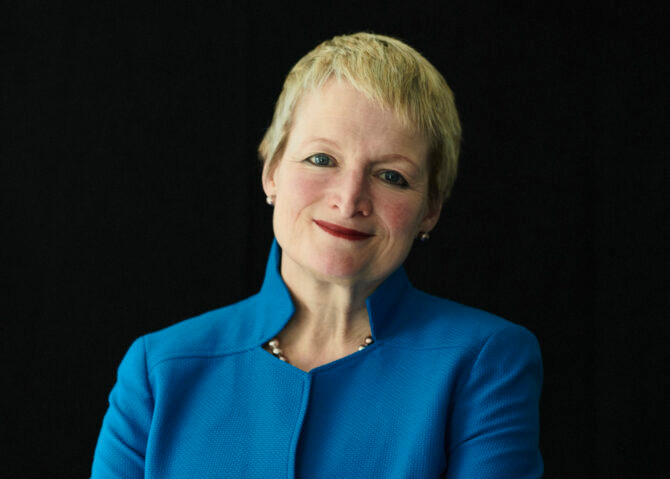Family-owned enterprises will be the main engine for Asia’s continued economic growth.
Family-owned businesses are some of the most significant economic contributors in many countries across the globe, with the Family Firm Institute (FFI) estimating that family enterprises comprise two-thirds of all businesses, generate between 70 and 90% of global GDP, and are responsible for hiring at least half of the workforce globally. These numbers are even more pronounced in Asia, where small and medium-sized family-owned enterprises are extremely common.
Small and medium-sized enterprises (SMEs) are not the only firms being run by families in Asia, where there are also a number of family-owned enterprises that account for 17% of the world’s 500 largest family firms. Among these Asian family-owned powerhouses are India’s Reliance Industries in the oil and gas industry, Hong Kong’s Sun Hung Kai Properties in real estate, and Malaysia’s Kuala Lumpur Kepong Berhad in the consumer products space.
China, South Korea and Taiwan are leading the family business boom in Asia. All these have been and are fast-growing economies where family ownership is the main business model. This trend is expected to continue given China’s continued economic growth, with a projected compound annual growth rate of 6%.
Despite China’s youth as a capitalist economy, at least 85% of its private enterprises are already family-owned. As China’s growth is driven by private enterprises, with most of them still in their first generation, we can expect many more great Chinese family businesses to be established over time. Their wellbeing is vital to the ongoing growth story, so Asian family enterprises have attracted much attention from academic institutions, governments, multinational corporations (MNCs) and investors in recent years.
The difference family makes
Being privately-owned makes family businesses quite different from their publicly-listed cousins. The first distinguishing characteristic is that they are free from the tyranny of shareholder pressure and so can genuinely think and act longer term. One necessary driver for longer-term thinking is that no generation wants to be the one that kills the business. But more than survival, family firms want to generate goodness alongside wealth. They want to support and build their communities. In our research supported by the United Overseas Bank (UOB) Riding on Asia’s Economic Transformation – Growth Strategies of Asian Business Families, we found that balancing growth with stability is the top priority for four out of five Asian business families. The emphasis on stability stems from the desire to protect and serve family members, employees, suppliers, customers and the local community. Business owners are keenly aware that the viability of the business is closely linked to the livelihoods of many, and thus, needs to be sustainable for the benefit of all stakeholders.
We see trendsetters in Asian family businesses, harnessing business value creation with social value creation to build sustainable family business beyond their own generation. As one of Singapore’s family business members shared with us recently: “We are adopting the FISH model, where the family is growing not just Financial, but also Intellectual (innovation), Social and Human capital.”
There is some change in the structure of family firms. The trend for children to leave and work elsewhere is reversing, as the children dislike the short-term view of businesses they encounter outside. And while there is a strong desire for children to take over the business – where they are not felt to be sufficiently talented or committed, they are supported by professional managers. But even when family firms float the business, the tendency is to retain a majority shareholding to safeguard the ability to think community and think long-term. For example, Bumitama Agri of Indonesia’s Lim family was listed in Singapore in 2012 with a free float of less than 20%, allowing the family to retain control.
Let’s look at family firms through the Business Families Institute’s (BFI) four lenses of Generation, Growth, Giving and Global.
Creating value for every GENERATION
Keep it in the family
77% of Asian business families reinvest earnings
Our research collaboration with Deloitte on Asian Business Families Governance: Crossing the Chasm for Intergenerational Change and Asian Business Families Succession – Going the Distance with the Next Generation revealed that 77% of the surveyed business families reinvested earnings. This demonstrates that Asian family firms prioritize building sustainable businesses for intergenerational transfer. The question is how can Asian family businesses do this systematically and sustainably beyond the first three generations? Most Asian family firms are still less than 100-years-old.
One role model is the Lippo Group of the Riady family in Indonesia, which has survived multiple wars and economic crises in the past 67 years. With an entrepreneurial mindset and aggressive approach, the founder, Mochtar Riady, grew the business from a small and humble bicycle shop in East Java to a massive collection of companies that cut across countries and sectors. The business empire is built on the Riadys’ ability to identify and act on a wide variety of business opportunities. The Lippo Group has moved from banking to property development to healthcare to fast-moving goods via their numerous ventures over the three generations of leadership. The most recent entrepreneurial ambition is their e-commerce venture, MatahariMall.com, the online version of its Matahari department store chain. Having learnt from the failure of their first attempt in 2000, Lipposhop, the Riadys have persisted in their e-commerce pursuits. With their eye on the surge in digitization and internet penetration in Indonesia, this effort is led by John Riady, the third-generation family member and current executive director of the Lippo Group. Last year, they teamed up with Grab, a regional ride-hailing company, which will help to transport and deliver goods to bolster MatahariMall’s services. Keeping abreast of modern business trends is their way of future-proofing the family firm.
GROWTH through technology and innovation
Eastern Spark
The ASEAN digital economy has the potential to reach US$200 billion by 2025.
Like the Lippo Group, businesses are harnessing technology, not only to improve business processes, but to reinvent their products and customers’ experience.
Sing Lun, a Singaporean apparel manufacturer, serving global brands such as Under Armour and Puma, started out in textile trading. Today, it operates 13 manufacturing and sourcing facilities across Asia, generating annual revenue of around US$185 million. In its quest to keep ahead, Sing Lun started innovating with wearable tech by collaborating with a UK company to create a shirt with washable sensors that measure heart rate and muscle fatigue. Beyond the obvious application in athletics, Mark Lee, the third-generation chief executive, has grander visions, such as monitoring the elderly or those in high-risk jobs like oil-rig workers.
Mark Lee is ‘innofacturing’ – innovating in manufacturing to create high-value products. Our UOB-partnered research survey indicated that innovating to improve product quality and/or drive cost reductions is no longer sufficient to meet today’s demand for unique, high-value products.
Mark Lee highlighted that technology changes consumption methods and behaviour patterns, so companies must use omni-channels and social media to promote their brands. The ASEAN digital economy has the potential of reaching US$200 billion by 2025, so this is a key area that the tech-savvy new generations of family business must exploit.
BFI@SMU’s (see box) discovery-journey to Silicon Valley in 2015 demonstrated that the Valley’s entrepreneurial spirit of creation and disruption came with an attitude of wearing failure as a badge of honour. This will require a shift in outlook for many of the more conservative Asian families.
GIVING back with impact
Family businesses distinguish themselves through their emphasis on planning long-term and giving back to the local community; many founders believe in improving the lives of the less privileged in the community. Most families’ philanthropic activities are driven by the founders’ values and motivations.
The more traditional forms of philanthropy are cash donations, or creating family-specific vehicles such as foundations. One example is the award-winning Kanbawza (KBZ) Brighter Future Myanmar Foundation (BFM), set up in 2008 by Aung Ko Win’s family, to uplift underdeveloped communities and eradicate poverty. Projects include community development, disaster relief, education, religion, women’s health and more, contributing close to US$84 million in total to date. With these initiatives, BFM has personally led the charge to address Myanmar’s large-scale social issues in order to introduce change beyond charity.
In recent years, we have observed increasing sophistication in Asian family businesses’ giving, as they seek to maximize the outreach and impact of their actions. This has resulted in creative endeavours such as the iSafe app developed by UST Global, of India’s Chandaria family, a multinational provider of digital, IT services and solutions. The iSafe app was designed to increase women’s safety in India. First launched in Kerala, the app allows women to send instant alerts to the police by using the panic button or simply by a long press of the volume button. The police will receive the caller’s location and the caller remains tracked until the situation is resolved. iSafe won the award for ‘Best use of mobile technology’ at Elets knowledge exchange awards 2015, held in Goa, India. UST has further partnered with Bosch to offer an in-car driver and passenger safety app, bridging the gap between vehicle and smartphone in times of crisis. This is a brilliant example of maximizing impact through leveraging the business’ core capabilities to effectively address a key societal need.
The new GLOBAL
In this hyper-connected world, a global mindset that goes beyond geographical expansion to a more holistic view of global networks and opportunities is crucial for collaboration and market-making. Wilmar International, the agribusiness group, recently acquired a 50% stake in Aalst Chocolate, a Singaporean chocolate manufacturer, to enter the Chinese chocolate market. The joint venture is a win-win situation, as Aalst can leverage Wilmar’s vast Asian network, and Wilmar can enter a new product segment with this downstream investment into chocolate manufacturing from their cocoa plantations. Both Wilmar and Aalst are family-owned and demonstrate the long horizon planning mind-set of doing business driven by strong family values.
Where next?
For family businesses, the next generation is seen as obvious value-creators. Just as every generation that preceded them, they understand the modern world and so are well placed to embrace technology and adopt best practices to lead the family firms’ ongoing transformations. Business savvy, highly educated, well networked, and having access to capital, these next generation owners are expected to build on global connectivity and opportunities to create better and sustainable businesses. However, they too live in rapidly changing times and need to bring professionalism into the business, and recognize that relationships alone are no longer enough to be successful.
In sum, this is an era of rapid change offering boundless opportunities. To stay ahead, family businesses need to transform themselves from wealth-creators to value-creators, with good practices underpinned and driven by their strong family values and ethos. We see Asian family firms increasingly doing so by building business for the greater good. Coupled with a global mindset, Asian family businesses look poised to reinvent themselves into the value creators of tomorrow.
BFI@SMU
The Singapore Management University (SMU) has recognized the emergence of Asian business families since 2010, and discerned that they require specifically contextualized thought-leadership and applied knowledge. In response to the growing needs of business families in Asia, SMU established the Business Families Institute (BFI) in August 2012. BFI@SMU collaborates with various partners, academic or practice, to be a leader in Asian business family-related knowledge. The Institute also encourages business families to Think Generations, Think Growth, Think Giving and Think Global. In doing so, BFI@SMU addresses family-specific issues, such as succession, family governance, entrepreneurship and wealth management. The mission of BFI@SMU is to enable business family members to be engaged and responsible stewards of their families, businesses and communities, through education, research and support.
— Professor Annie Koh is vice president of the Office of Business Development at Singapore Management University.
An adapted version of this article appeared on the Dialogue Review website.



